
| Back to NFG/Games More M2 info @ System16.com Note: These images are free to use But please link to this page if you do! |
|
Perhaps I should have called this the M2 page, as there's more M2 info than Polystars. Oh well - if you want to read a great review of Polystars, see Malc's writeup on Shmups.com. Back in the day the 3DO (three-dee-oh, the sequel apparently to audio, video, 3DO) was a much maligned system with an astonishingly dedicated fanbase. I think a lot of that was rationalization: When you buy something and people mock you for it you tend to be a little defensive. When you people pay $700 for a console and the games more or less suck on a Jaguar scale that defensive mechanism can go to extremes. After stumbling along for a short couple of years the 3DO company announced their successor: the M2. The screenshots they showed for the system were pure vapourware, and today's hardware is only just capable of producing images like 3DO claimed were M2-produced back in 1998. When 3DO ran into financial difficulties they sold the M2 technology to Panasonic for a hundred million dollars, something I'm sure someone at Panasonic is still hearing about every day from his superiors.
The M2 chipset shown was basically over-hyped vapourware. The actual chipset never made it into any console, and aside from three or four arcade releases and one ridiculous real estate viewing system the M2 was basically quietly forgotten. Some prototypes exist in the form of uncoloured unlabelled consoles that may or may not be just a 3DO in a fancy shell. The real estate viewing system was designed to show unbuilt houses in photo-realistic detail and allow for fly-throughs of the virtual house. Hardly a hundred-million dollars worth of profit to be made there, I shouldn't think. Both of these systems can occasionally be found for sale, though both will fetch close to or over a thousand dollars (as of August 2003). The only two released games were from Konami, and they were released only to arcades, and both were pretty much forgettable. One fighting game (the name escapes me at the moment, I apologize) and the one shown below, Polystars (also known as Police Stars). The hardware as shown seems to be about Playstation quality. It's certainly not noticably better, though with only a first-gen software release to go by it's impossible to say whether it could have eventually equalled or bettered the venerable PSX. Considering that by 1998 Panasonic still hadn't released the system it's safe to say it would have been doomed if it ever saw release. Two years later than the PSX and no better? That's the kiss of death - the dreamcast was, after all, released one year after that in 1999.  The M2 board on display in 1998 The PCB above was shown by Panasonic when they announced that maybe the M2 wasn't going to be used for gaming after all, dashing the hopes of all the 3DO fanboys counting on the M2 to vindicate their fervour. This particular PCB is actually the one used by Konami in their arcade hardware, as you can see in the picture below. This PCB was taken from my Polystars cage and as you can see it's nearly identical to the one above. The only difference is the number of RAM chips onboard, which may or may not indicate a difference in the amount of RAM onboard.  The M2 board from Konami's Polystars And that's all there is to the enigma of the M2. The screenshots shown by Panasonic were faked, the hardware was nothing special for the time, and the only released games bear all the hallmarks of early 3D games: flat shaded polygons with minimal textures and fanciful abstract 3D objects without even a nod to realism, undoubtedly because the hardware couldn't handle it and at the time few people were skilled enough to produce it. It never would have saved 3DO against the Sony juggernaut, and perhaps that, more than anything else, is why it was never released. Even if it were all that 3DO promised, without the support of top-notch developers and savvy marketing it would still have failed - the Dreamcast is proof enough of that. 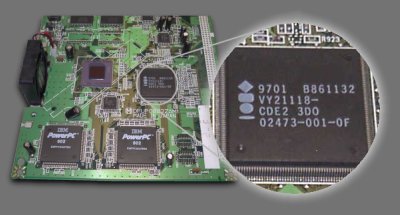 Here you can see the 3DO chip, and to the left, the video chip 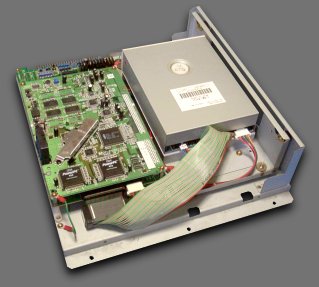 The entire cage, much larger than necessary There are spots on the PCB for additional features, like what I assume are 3DO controller ports, as well as 3P + 4P ports, in addion to a small unlabelled edge connector and a few other unused connectors. If this was indeed Panasonic's M2 board and not Konami's creation it was certainly forward looking, and not a little optimistic. Lawrence. |
  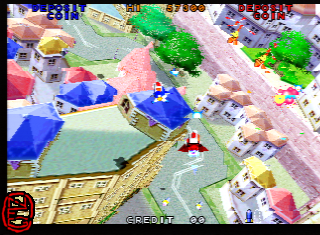 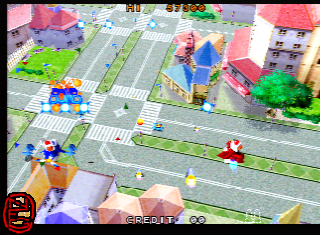 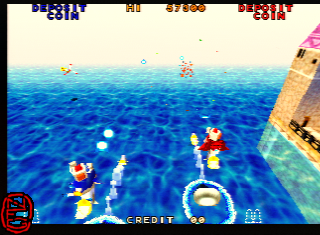 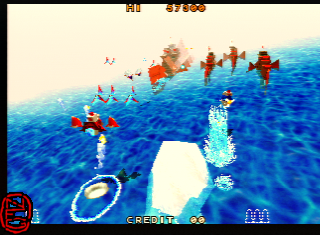 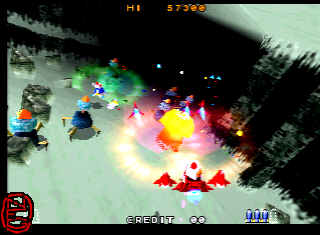 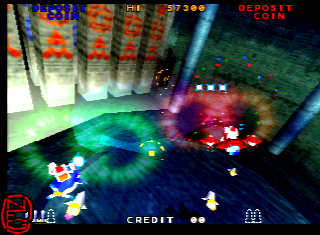 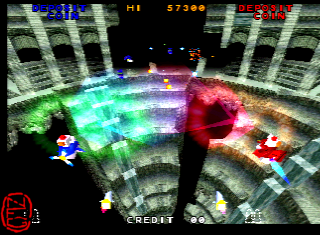 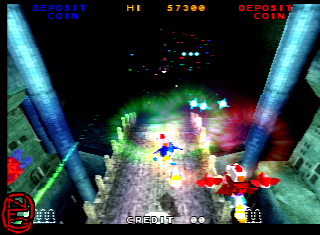 |